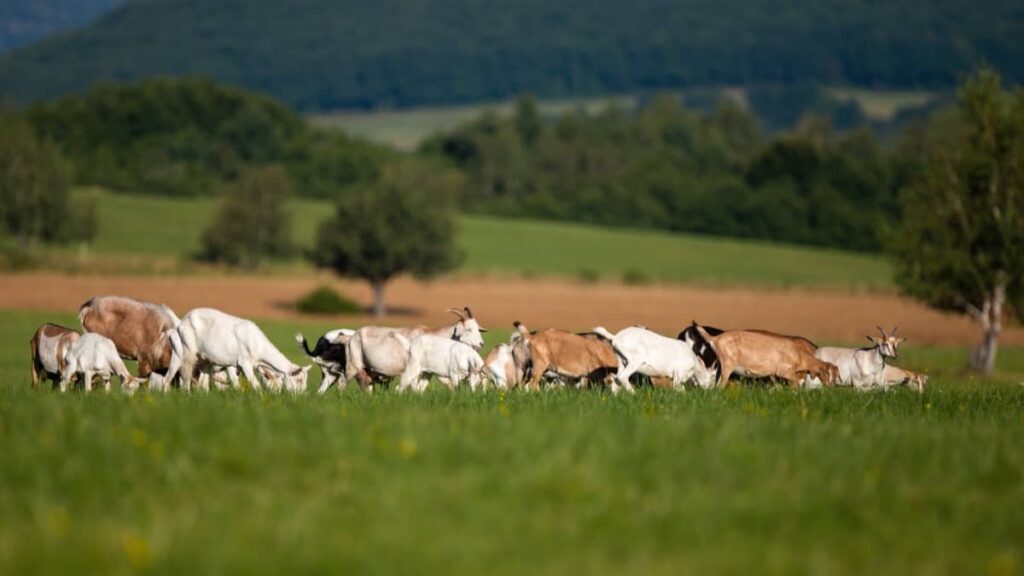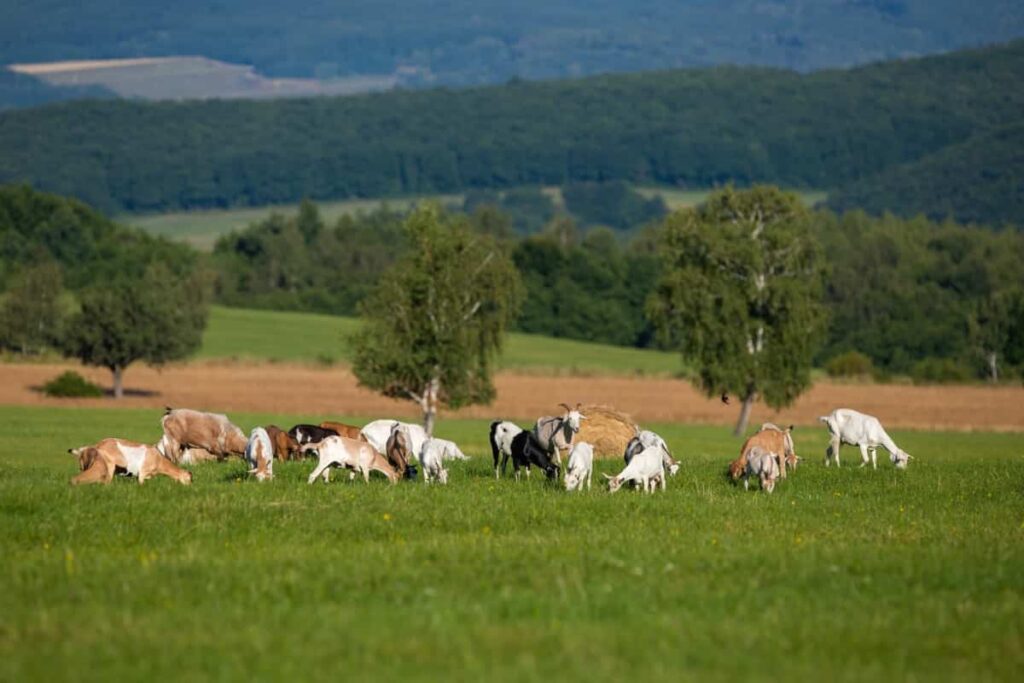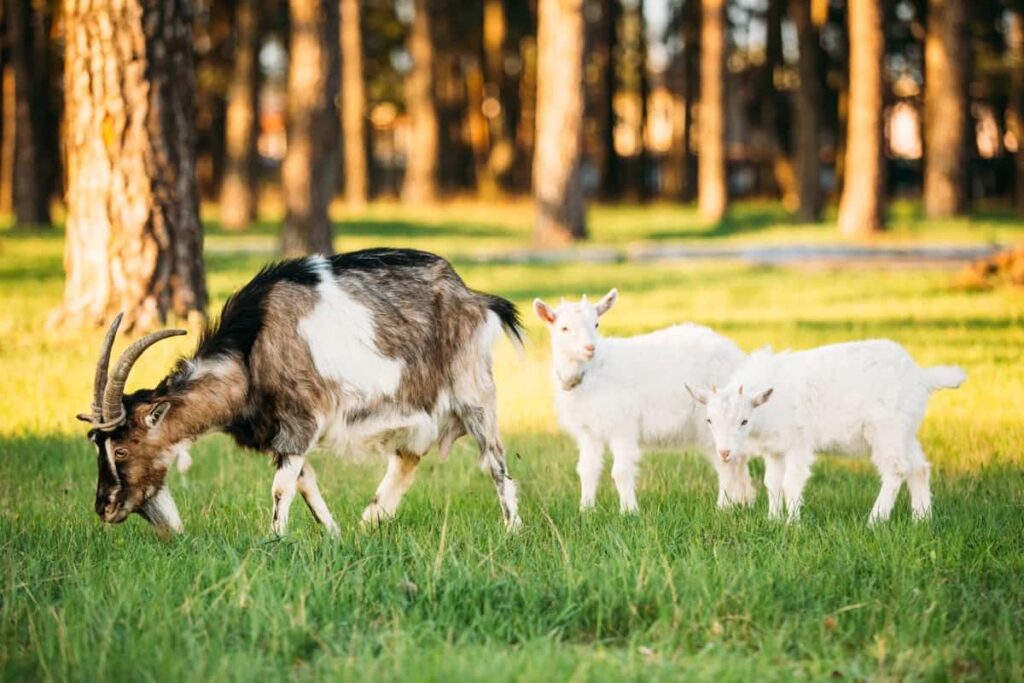Agroforestry is an agricultural practice that combines trees with crops and livestock to create a more sustainable and productive farming system. Integrating goats into agroforestry systems can have many benefits, including improved nutrient cycling and soil fertility, weed control, increased biodiversity, and livelihoods and income generation. In addition, goats can reduce labor inputs and provide a source of meat and milk for human consumption.

However, considerations to consider when integrating goats include species selection, grazing management, shelter and fencing, and health and nutrition. Successful examples of goat integration in agroforestry systems include silvopastoral, alley cropping, and forest garden systems. Challenges such as predation, social and cultural barriers, and market access must also be addressed.
Transforming Agroforestry with the Power of Goats
What is Agroforestry?
Agroforestry is a land-use practice that integrates trees and shrubs with pasture or crops to create a sustainable farming system. Improved yields from staple food crops, improved farmer lives from income production, higher biodiversity, reduced erosion, improved soil structure and health, and carbon sequestration are all benefits of this planned marriage of agriculture and forestry. Trees in agroforestry systems can also yield wood, fruits, nuts, and other economically and practically valuable goods.
Agroforestry is extremely common in tropical regions, particularly in subsistence smallholding areas in Sub-Saharan Africa. They have, nevertheless, been accepted in the United States and Europe due to their numerous advantages. Agroforestry is similar to intercropping in certain ways, but it can also involve considerably more complicated multi-strata agroforests with hundreds of species. It can also use nitrogen-fixing plants like legumes to replenish soil nitrogen, which can be sown sequentially or concurrently.
Benefits of Integrating Goats in Agroforestry Systems
- Nutrient cycling and soil fertility: Goats graze on shrubs and trees, consuming leaves and twigs that are often high in nutrients. As they digest these materials, they produce manure that can spread throughout the agroforestry system, improving soil fertility and nutrient cycling.
- Weed control: Goats are known for their ability to control weeds. They can graze on weeds and other unwanted vegetation, reducing the need for manual or chemical weed control methods.
- Increased biodiversity: Agroforestry systems that include goats often have a greater plant and animal species diversity. This can lead to improved soil health, reduced pest and disease pressure, and a more resilient ecosystem.
- Livelihoods and income generation: Goats can provide a source of meat, milk, and other products that farmers can sell or consume. This can provide additional income streams and improve the livelihoods of those practicing agroforestry.
- Reduced labor inputs: Goats can graze on shrubs and trees that would otherwise require manual pruning or removal, reducing the amount of labor needed to maintain the agroforestry system.
Considerations for Integrating Goats in Agroforestry Systems
- Fodder production: Acacia sp., Leucaena leucocephala
- Fruit production: Cashew (Anacardium occidentale), coconuts (Cocos nucifera), mango (Mangifera indica), oil-palm (Elaeis guineensis), and tamarind (Tamarindus indica)
- Manure production: Caliandra eryophila, L. leucocephala
- Protection and shade: Ficus sp., L. leucocephala
- Wood production: C. eryophila, Gliricidia sepium, and Erythrina variagata
- Miscellaneous: Ornamental or ceremonial reasons, e.g., Ficus religiosa.
In case you missed it: Best Practices for Disease Prevention and Management in Goats: Strategies for Maintaining a Healthy Herd

Coconuts, oil palm, and rubber are the region’s three most important tree crops are coconuts, oil palm, and rubber. This is because the introduction of goats or sheep is most advantageous during the first four years of the oil palm’s life, after which there is a marked reduction in dry matter availability. The integration of small ruminants with coconuts, oil palm, or rubber raises a number of issues because of the interaction with the primary tree crop.
The availability of dry matter also depends on the tree crop, which is essential for fodder production. Integrating small ruminants with tree crops may prove to be economically viable, but cost-benefit analyses are necessary to demonstrate the system’s viability.
- Grazing management: Proper grazing management is needed to ensure goats’ health and agroforestry systems’ health. Overgrazing can damage plants and soil, while under-grazing may limit the potential benefits of integrating goats.
- Plant selection: Appropriate plant species are essential in agroforestry systems with goats. Goats can consume many plants, but some species may be toxic or harmful to milk production.
- Animal health: Good animal health maximizes productivity and minimizes disease transmission. Vaccination, deworming, and regular checkups should be implemented.
- Infrastructure: Adequate infrastructure is required to provide goats shelter, water, and feed. The infrastructure should be designed to protect both the goats and the agroforestry system.
Case Studies of Successful Integration
- In Honduras, farmers integrated goats into their agroforestry system to manage vegetation growth and produce meat and milk. The goats were allowed to graze in the understory of the trees, which helped to control weeds and other unwanted vegetation. The farmers reported increased productivity of their fruit trees and improved soil health due to the goats’ manure.
- In India, a farmer integrated goats into his orchard/. The goats grazed on the fallen mango leaves and other vegetation, reducing the need for manual cleanup and providing a source of protein for the goats. The farmer also reported increased mango yield due to improved soil fertility and the goats’ contribution to pollination.
- In Kenya, a farmer integrated goats into his macadamia nut farm. The goats were used for weed control and manure production. The farmer reported a significant reduction in labor costs for weeding and fertilization, as well as improved soil health and macadamia nut yield.
Challenges and Solutions for Integration
Integrating goats in agroforestry systems presents several challenges, including managing the goats’ grazing behavior, maintaining the balance between tree and forage production, and managing the goats’ health and nutrition. In addition, there may be challenges in coordinating the efforts of multiple stakeholders, such as farmers, foresters, and extension agents. To overcome these challenges, various solutions have been proposed.
These include selecting goat breeds well-suited for agroforestry systems, using rotational grazing practices, providing adequate nutrition and veterinary care, and establishing effective communication channels between stakeholders. In addition, careful planning and monitoring can help ensure that the agroforestry system is sustainable over the long term. Success stories of the integration of goats in agroforestry systems have highlighted the benefits of this approach, including increased forage production, improved soil health, and diversified income streams for farmers.
In case you missed it: Surviving the Heat: The Impact of Climate Change on Goat Farming

Conclusion
The integration of goats in agroforestry systems offers numerous benefits, such as improving soil quality, increasing biodiversity, and providing a source of income. However, it also presents challenges, such as the potential for overgrazing and the need for effective management practices. By implementing appropriate management techniques and promoting the sustainable use of goats, farmers can successfully integrate these animals into agroforestry systems and reap their benefits.
- Types of Grass Growing for Goat Farm
- How to Train Goats for Milking: A Beginners Guide
- Goat Milking Practices and Equipment: A Beginner’s Guide
- Goat Farming for Fiber: Producing Mohair and Cashmere
- Maximizing Goat Milk Production: Tips for Dairy Goat Farmers
- Goat Farming as a Family Business: Strategies for Success
- Profitable Kenya Goat Breeds for Commercial Dairy and Meat Business
- Unlock the Secrets of Oberhasli Goat: Discover Raising and Management Practices
- Ultimate Guide to Myotonic Goats: Explore Profile to Raising